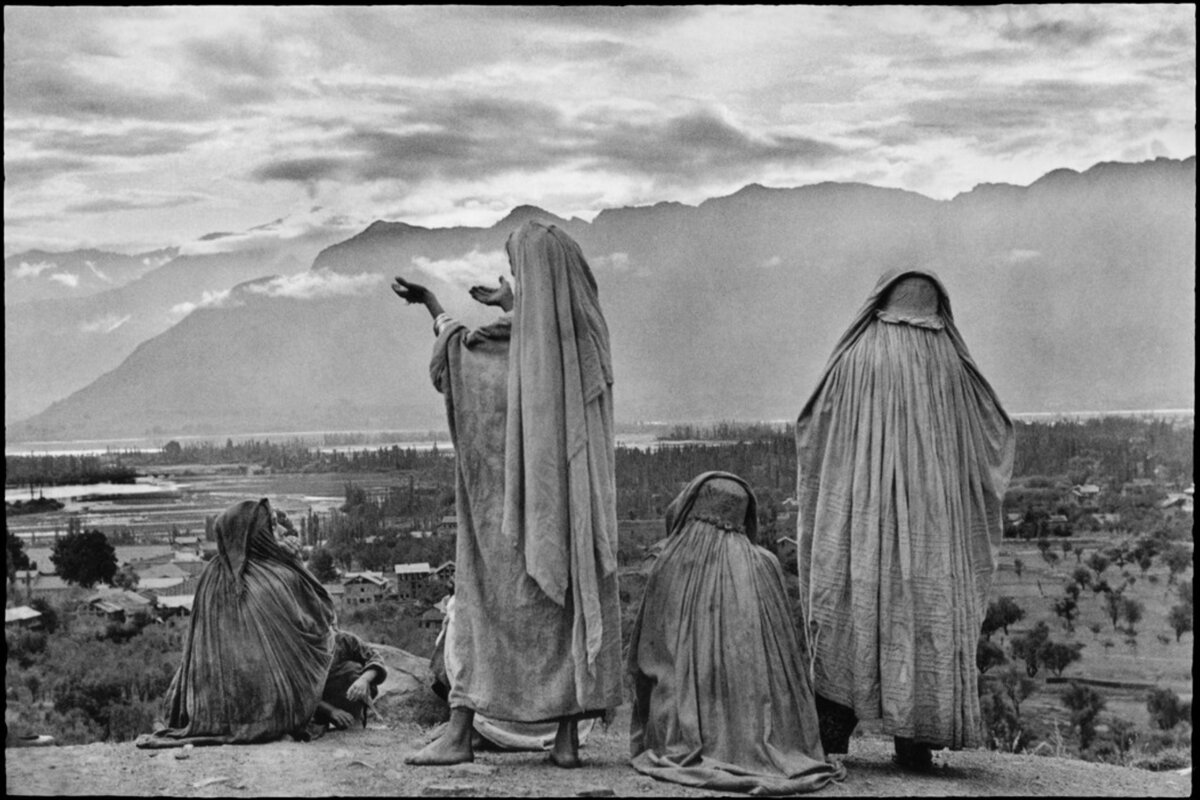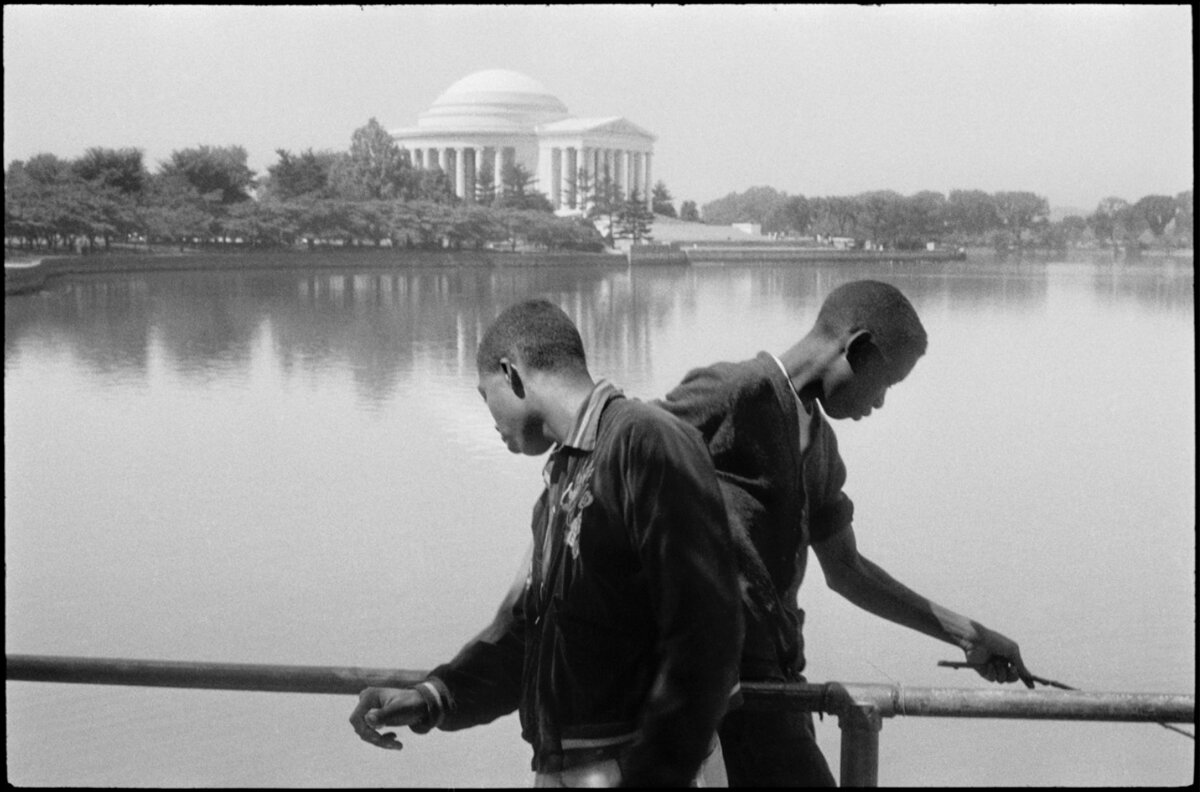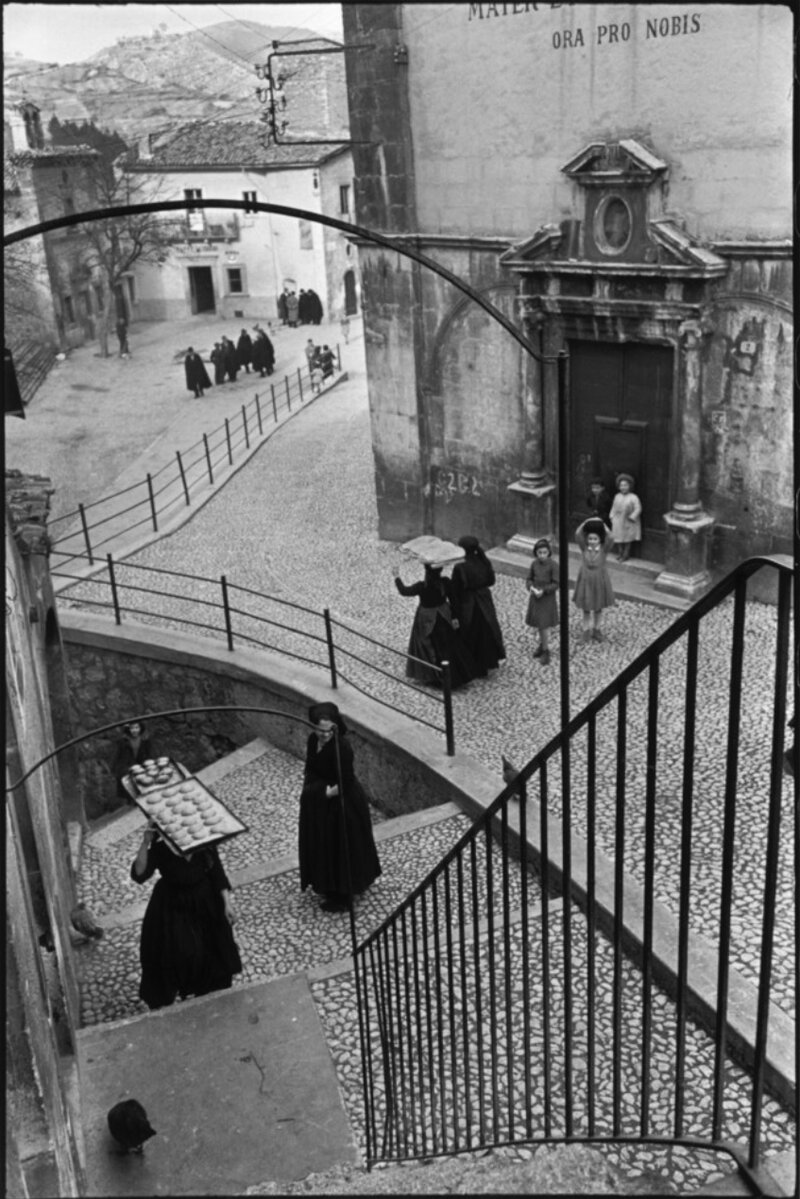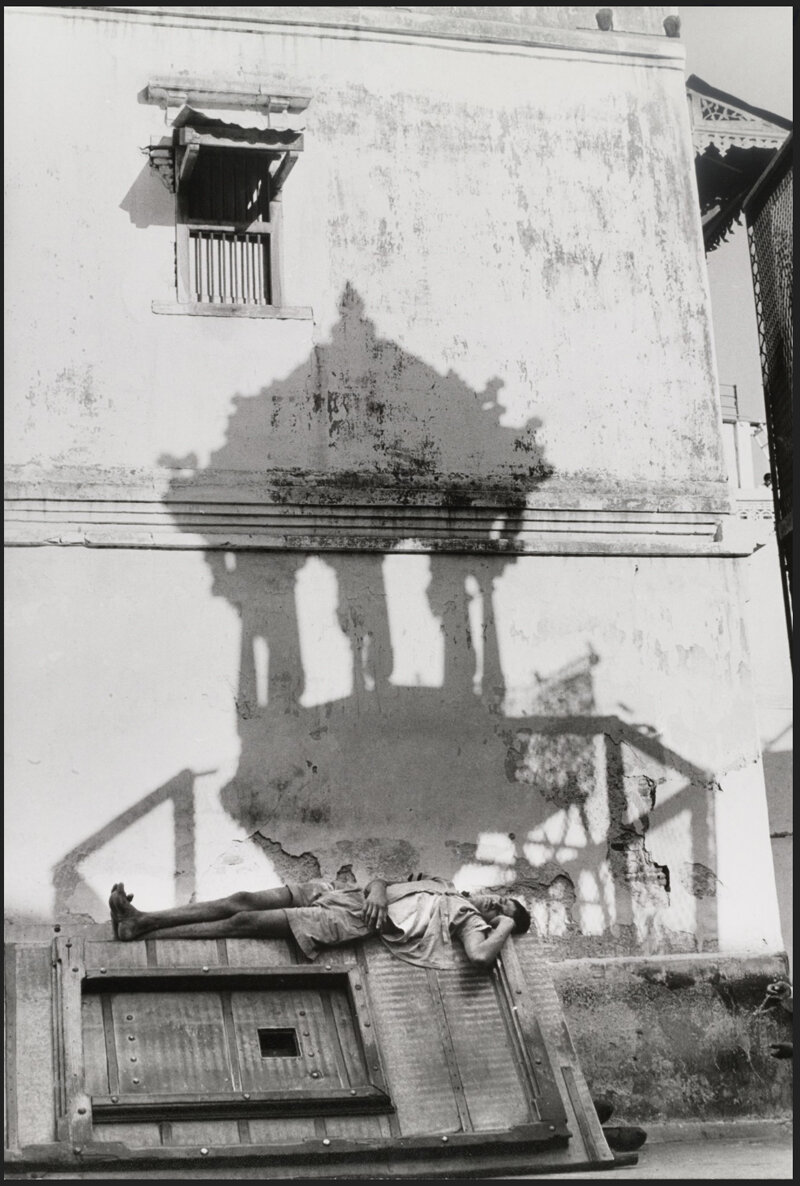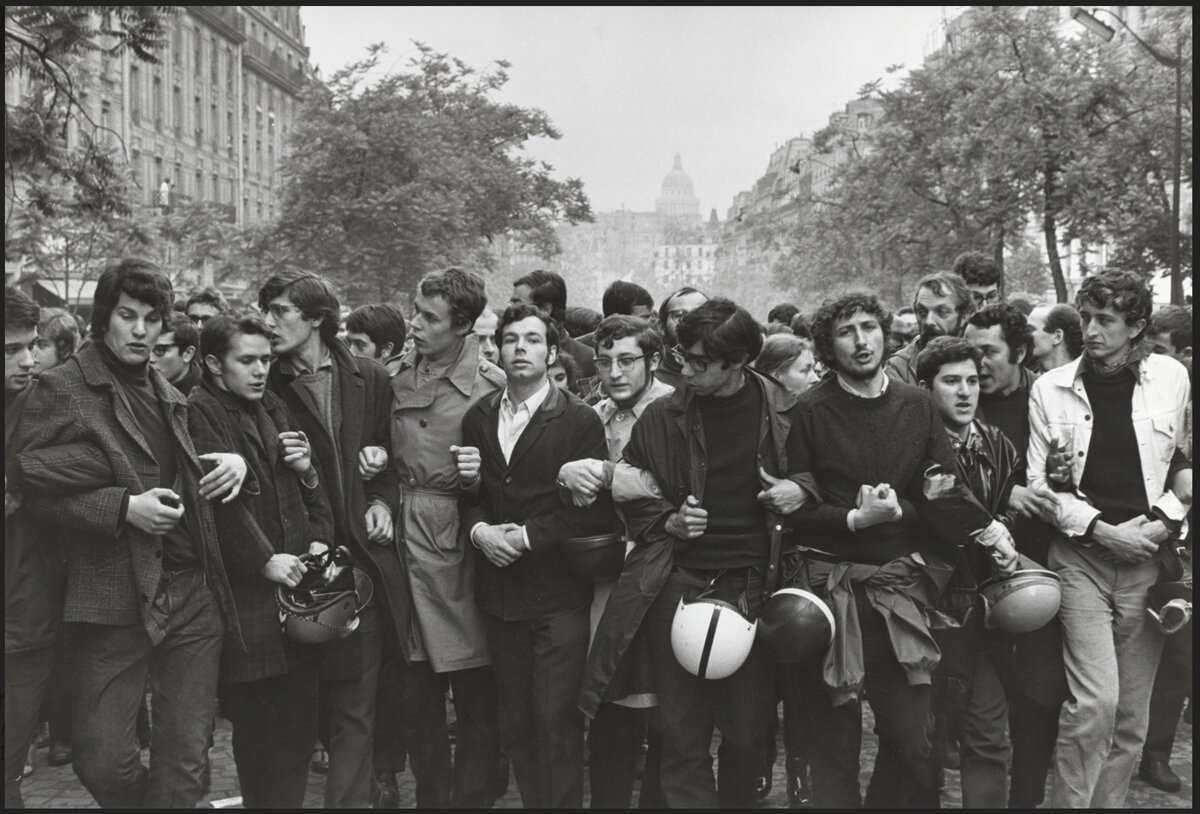"Big cities in my eyes" - photography Meti Spahiu (English)
At TATÌ SPACE we are opening a new series of blogposts on Albanian emerging photographers in the field of Architectural Photography. Meti Spahiu is a recent graduate architect at the Technical Faculty of Vienna (TU WIEN), who pursues the passion of Architectural Photography. The subject of his photograph are the residential and commercial buildings in Vienna and other European cities.
At TATÌ SPACE we are opening a new series of blogposts on Albanian emerging photographers in the field of Architectural Photography. Meti Spahiu is a recent graduate architect at the Technical Faculty of Vienna (TU WIEN), who pursues the passion of Architectural Photography. The subject of his photographs are the residential and commercial buildings in Vienna and other European cities. Born in Kamenica, Kosovo, where he lived until the age of 25, Meti moved to study and live in Vienna, Austria. He sees his journey in architecture closely linked to photography. His black and white photographs express the verticality and horizontality in architecture, reinforcing the aesthetic of the building. As he says, “The idea of my photographs is to bring beautiful images, to draw the public's attention to the aesthetics of the objects photographed. I would like people who pass every day carelessly near a building to discover the beauty of its architecture when they see the photograph. "For me, photography is a field that will never disappoint and that will go hand in hand with the profession of architect."
City gate Aderklaaerstrasse - Vienna, © Meti Spahiu
Fernheizwerk Arsenal - Vienna, © Meti Spahiu
Harry SeidlerTurm - Vienna, © Meti Spahiu
JanisJoplin Promenade - Vienna, © Meti Spahiu
Leonard-Bernstein-Strasse - Vienna, © Meti Spahiu
Maintrain Station -Vienna, © Meti Spahiu
Olympiahalle 6020 Innsbruck, © Meti Spahiu
Strasse der Wiener Wirtschaft - Vienna, © Meti Spahiu
The stairs school “Eusebio da Guarda”, © Meti Spahiu
Via Dell’annunciata Milano, © Meti Spahiu
Henri Cartier-Bresson
Henri Cartier-Bresson is a French photographer, one of the most influential figures of the 20th century. He is considered the pioneer of candid street photography, the father of modern photojournalism, who created a new practice and aesthetic in photography, making photojournalism accepted as an art form. His name is associated with the Leica 35mm film camera and the concept of "decisive moment".
Henri Cartier-Bresson
(France 1908-2003)
Portrait Henri Cartier-Bresson with his camera Leica M3, © Jane Bown, Paris 1957
Henri Cartier-Bresson is a French photographer, one of the most influential figures of the 20th century. He is considered the pioneer of candid street photography, the father of modern photojournalism, who created a new practice and aesthetic in photography, making photojournalism accepted as an art form. His name is associated with the Leica 35mm film camera and the concept of "decisive moment". Nowadays where we are surrounded by a sea of images, when we shoot digitally and download thousands of photographs in social media, the legacy of Henry Cartier-Bresson not only isn’t outdated, but radher it teaches us about the ethics and technique of photography. Henri Cartier-Bresson was considered “a responsible artist, responsible to his craft and to his society” (L.K)
He is the avant-garde artist, the young rebel, the wildlife hunter in Africa, the former prisoner in Nazi camps, the photojournalist of the main events after the World War II, the co-founder of Magnum photo agency, a figure who revolutionized the photographic image. And yet he remained a silent figure, preferring to stay anonymous and not to give interviews. He was the person who stood behind the camera waiting for the perfect moment to appair, who carefully craft the shot, and preferred to immerse in the environment he was going to photograph. In the student revolts in Paris in 1968, despite the turbulent events, witnesses say that Bresson shot at a rate of 4 photos per hour. As he says 'I'm not interested in photography, I am interested in people'. For nearly half a century he photographed the major events of 20th century; the Spanish Civil War, the end of World War II, Gandhi a few minutes before his assassination in 1948, the first days of the communist regime in China in 1949, Indonesia emerging from colonialism, etc. He was the first Western photographer to be allowed to photograph in Soviet Union during the Cold War. Bresson's merit is that he created beautiful and poetic images, which portray the importance of place and time. As he says: "My goal was to express the essence of a phenomenon in a single image" which synthesizes his idea of decisive moment
© Henri Cartier-Bresson, Heeres, France 1932
© Henri Cartier-Bresson, Behind the Gare St.Lazare, Paris France, 1932
© Henri Cartier-Bresson, “Inside the sliding doors of the bullfight arena” Valencia Spain, 1933
Beginnings in Photography
Henri Cartier-Bresson started photography in 1931, when he bought the new Leica 35mm film camera, that accompanied him for nearly half a century. He belongs to the first generation of European photographers who explored the creative potential of small handheld camera. For Bresson - "Photography is an instant drawing, and the secret is to forget you are carrying a camera." His initial desire was to become a painter, (after refusing the family's request to continue the tradition of the family textile business). The main influences in his visual formation, which were expressed later in his photography, were the formal geometry of Renaissance painting and the serendipity of Surrealism, together with a strong adventure spirit. Influenced by the school of the cubist painter Lohte, Henry developed an interest in classical painting with strict mathematical proportions. He later said that everything he knew about photography he had learned from Lohte. For Bresson, the search for geometric order in the composition in viewfinder was an immense joy and a main criteria in his photographic process. He never croped the photos but insisted that they be presented as he had shot them, even with the black frame of the negative development. "You shoot properly while it's there", thus reinforcing the idea that the photo should be shot properly in the moment of its composition in the viewfinder. In this way Henri Cartier-Bresson helped the credibility of the photojournalism, untouched by editing.
© Henri Cartier-Bresson, “Two children in the narrow sunlight streets” Seville Spain, 1933
© Henri Cartier-Bresson, A group of people in front of a wall filled with small windows, Madrid Spain, 1933
The second influence in Bresson's photography comes from a less rational movement such as Surrealism, with which he came in contact in his youth during meetings with the leading figures of the movement at "Cafe de la Place Blanche" in Paris. From Surrealism he adopted the philosophy of spontaneous, chance and intuition. " For me the camera is a sketch book, an instrument of intuition and spontaneity, instant master, which in visual terms, asks and decides simultaneously" For Henri Cartier-Bresson, the Leica 35mm film camera with 50 mm lens, was the most appropriate instrument to express his artistic creativity. While Bresson was looking for the spontaneous, his compositions are not the product of serendipity, but he carefully chooses the stage and wait until all the elements appear in the viewfinder, so to fix in the film the decisive moment.
@ Henri Cartier-Bresson, “A group of children play amongst rubble” Seville Spain, 1933
© Henri Cartier-Bresson, “Sunday on the banks of River Seine” France 1938
Although his photographs reflect an event or historical moment, they are independent artistic entities. Seeking beauty in ordinary things, he associated art with photojournalism. His first photographs belong to the period 1932-1935 during his travels to Italy, Spain, Morocco, Mexico, which were presented in several photographic exhibitions. The photographs of this period are considered to be the best of Bresson and the history of modern photography inspired by Surrealism.
© Henri Cartier-Bresson, Coronation of King George VI, London England, 12 May 1937.
Bresson in cinematography
During his stay in New York in 1935, Bresson met Paul Strand who encouraged him to pursue cinematography. Between 1936 and 1939 he worked as an assistant of French director Jean Renoir in the production of Une Partie de Campagne (A Day in the Country) and La Règle du Jeu (The Rules of the Game). In 1937 Bresson produced the first documentary on medical aid in the Spanish Civil War entitled Return to Life. Although Bresson did not belong to any political party, his anti-fascist orientation led him to work for the left-wing newspaper Ce Soir where he met other photojournalists with similar interests, such as Robert Capa and David "Chim" Seymour, with whom he founded after war the Magnum photo agency. With the start of World War II in 1939, Bresson joined the Army unit for film and photography. In 1940 he was captured by the Germans and imprisoned in forced labor camps. After two unsuccessful escape attempts, he managed to escape a third time, after which time he worked illegally. After the war, Bresson returned to cinematography with the direction of the film La Retour, on the return of war displaced persons. Bresson returns to cinematography in the late ’60s with Impressions of California (1969) and Southern Exposures (1971). As he states, Bresson quit making films because he was not attracted to the direction of actors and the lack of spontaneity. But from the cinematography he learned the narrative and the expressive moment. Bresson is credited with influencing the development of the cinema verite genre.
© Henri Cartier-Bresson, “Downtown Manhattan NewYork” USA 1947
Bresson in Magnum
After Bresson's exhibition at MOMA New York in 1946 and his trip to America which concludes with a photo book, Bresson undertakes to pursue the profession of photojournalist following the advice of Robert Capas, who understood the importance of this profession in post-war society. Together with Robert Capa, David Seymour, George Rodger, he founded in 1947 the first cooperative photography agency Magnum. The organization provided the newspapers and magazines the coverage of major events by the most talented photojournalists, preserving the author rights and freedom of choice. Under the aegis of Magnum, Bresson photographed major events in India, China, Indonesia, Egypt. These photographs were published in the form of several books between 1952 and 1956. The best known of these is the one published in 1952 entitled "Images à la sauvette", translated into English "The decisive moment", which refers to Bresson's main idea on photography – “the elusive instant when, with brilliant clarity, the appearance of the subject reveals in its essence the significance of the event of which it is a part, the most telling organization of forms”.
© Henri Cartier-Bresson, “Refugees exercising in the camp to drive away lethargy and despair” Punjab India, 1947
© Henri Cartier-Bresson, “Muslim women praying toward the sun rising behind the Himalayas” Kashmir India, 1948
© Henri Cartier-Bresson, Crowds reaching into the train carrying Gandhi’s ashes hoping to pay the last tribute to their leader Delhi India 1948
© Henri Cartier-Bresson, Washington DC, USA, 1957.
© Henri Cartier-Bresson, “Sale of gold in the Last Days of Koumintang, Shangai” China 1949
© Henri Cartier-Bresson, “Elementary School, Moscow USSR” 1954
© Henri Cartier-Bresson, Scanno Abruzzo, Italy 1951
© Henri Cartier-Bresson, Rue Mouffetard, Paris 1954
Between 1963-1965 Bresson photographed in Cuba, Mexico, India. His later books are France (1971), The Face of Asia (1972), About Russia (1974). With his nomadic spirit he witnessed after World War II the major events as the transition of powers. He photographed ordinary people with the same importance that he photographed famous figures of art and politics.
© Henri Cartier-Bresson, Cyclades Greece 1961
© Henri Cartier-Bresson, Berlin 1963
© Henri Cartier-Bresson, Berlin Wall, 1963
© Henri Cartier-Bresson, Prizren 1965
© Henri Cartier-Bresson. Ahmadabad India, 1966
© Henri Cartier-Bresson, “Funeral Ritual, Tokyo Japan” 1965
© Henri Cartier-Bresson, Brie France, 1968
© Henri Cartier-Bresson, “Simiane la Rotonde” France 1969
© Henri Cartier-Bresson, Student Demostration, Paris, June 1968.
In the early ‘70s, Bresson left photography and dedicated himself to painting. In 2003, Bresson co-founded the Henri Cartier-Bresson Foundation with his wife Martin Franck, a Magnum photographer, and their daughter. The Bresson negatives are owned by the Foundation and agency Magnum. He left a legacy of nearly half a million negatives, shot over a period of 70 years.
Links:
Magnum Agency
https://www.magnumphotos.com/photographer/henri-cartier-bresson/
Foundation Henri Cartier-Bresson
https://www.henricartierbresson.org/en/hcb/
Selected Books by Henri Cartier-Bresson
Gabriele Basilico
Gabriele Basilico is an italian photographer known for its urban and cityscape photographs. He is one of the best european and international contemporary photographers of the 20th century. Graduated as an architect from the Polytechnic University of Milan in 1973, he devoted his entire career documenting urban and metropolitan landscapes transformed from an industrial to post-industrial society.
Gabriele Basilico
(Milano 1944-2013)
Gabriele-Basilico, Portrait 2012, by Giorgia Fiorio
Gabriele Basilico is an italian photographer known for its urban and cityscape photographs. He is one of the best european and international contemporary photographers of the 20th century. Graduated as an architect from the Polytechnic University of Milan in 1973, he devoted his entire career documenting urban and metropolitan landscapes transformed from an industrial to post-industrial society.
© Gabriele Basilico, Milano Ritratti di Fabbriche, 1978-1980
Documenting the urban change was his main objective. In his autobiographical book "Architecture, Cities, Visions: reflections on photography" he states : “I had given myself a kind of mission, to witness how urban space changes… Cities resemble each other, but they are not all the same: there are social differences, of history, of size, of latitude, of climate. I think that urban space, subjected to an unprecedented change in history, presents itself as a real metaphor for our society, which certainly deserves to be observed with great attention”.
© Gabriele Basilico, Milano 1973
On the issues of transformation, shape and identity, Gabriele Basilico has published over 100 photography books during his 40-year career. The main cities he has documented are Milan, Rome, Bari, Barcelona, Berlin, Madrid, Lisbon, Naples, Hamburg, Beirut, Genoa, Istanbul, Moscow, Paris, Shanghai, San Francisco, Rio de Janeiro, etc. His first project was in 1978-1980 "Milan-Factory Portraits", presented in 1983 at PAC Milan (Contemporary Art Pavilion). The first international project came in 1984 when he and other photographers were commissioned by the French government in Mission DATAR to document the transformation of contemporary landscape. From here the book "Bord de Mer" was created. The theme of ports and the sea accompanies him, as in the project of Genoa, concluded in the book “Porti di Mare” (1990).
© Gabriele Basilico, Dunkerque 1984
© Gabriele Basilico, Dunkerque 1984
© Gabriele Basilico, Bord de Mer, 1984
© Gabriele Basilico. LeTouquet, France 1984
© Gabriele Basilico, Genova 1985
© Gabriele Basilico, Hamburg 1988
In 1991 he took part in the internationally renowned project, photographing Beirut destroyed by the 15-year civil war, along with other photographers such as Rene Burri, Robert Frank, Jodeph Koudelka, Raymond Depardon and Fouad Elkoury. In 1996 he participated in the Venice Biennale with the exhibition, “Cross Sections of a Country”, where he received the Osella d’Oro Award for Contemporary Architecture Photography. In 1999 he published the book "Interrupted City" and "Cityscapes" with over 300 urban photographs taken since the early ‘80s. In 2000 he photographed the Berlin metropolitan area, from which the book “Berlin” was created that won the best photography book award in 2003. In 2007, he was invited by SFMOMA (San Francisco Museum of Modern Art), to develop a photography project in the Sillicon Valley metropolitan area, published in the book "Gabriele Basilico-Sillicon Valley". Another project of this year is "Vertical Moscow", photographed from the seven towers of the Stalinist period. In the coming years 2010-2012 his work will be extended to other world metropolis; Istanbul, Shanghai, Rio de Janeiro. The latest project is in Milan 2012, documenting the construction of Porta Nuova from its inception to the completion.
© Gabriele Basilico, Beirut 1991
© Gabriele Basilico, Beirut 1991
© Gabriele Basilico, Madrid 1993
© Gabriele Basilico, Bilbao 1993
© Gabriele Basilico, Porto 1995
The photography of Gabriele Basilico is known for its monumentality and silence, the lack of people, the contrast in black and white, which reinforce the grandeur of architecture and gives the place a metaphysical character. He is interested in social and historical stratifications. As he states : "I can not help but see the city as a large body that breathes, a body in transformation, and I am interested in grasping its signs, observing its shape, like the doctor who investigates the modifications of the human body to study its nature. I am constantly looking for new points of view, as if the city were a labyrinth and my gaze was looking for a precise point of penetration”.
© Gabriele Basilico, Milano 1995
© Gabriele Basilico, Milano 1995
© Gabriele Basilico, Milano 1996
Gabriele Basilico's photography is documentary in character, but far from advertising and propaganda. He doesn’t capture the 'decisive moment' as Bresson, but is meditative and analytical as Atget, Evans, and Beckers. As Francesco Bonami says, "Basilico’s work is not a celebration of architecture and its symbolic value, but a discourse about the aesthetic value of architecture and the constant tension between this and its social function". During his entire life, Basilico has explained his photography in many articles, conversations and books. But the paragraph that most synthesizes his thinking is: “Photographing the city does not mean choosing the best architecture and isolating it from the context to enhance its aesthetic, but for me it means exactly the opposite. That is, putting in the same level high-end architecture with ordinary one, building a place of coexistence, because the real city, the city I am interested in, contains this mixture of excellence with mediocre, the center with periphery, a vision of urban space that once we would have called democracy ”.
© Gabriele Basilico, Paris France 1997
© Gabriele Basilico, Valencia 1999
© Gabriele Basilico, Milano 2011
© Gabriele Basilico, Rome 2007.
© Gabriele Basilico, Roma 2007
© Gabriele Basilico, San Francisco 2007
© Gabriele Basilico, Shanghai 2010
© Gabriele Basilico, Istambul, 2010
© Gabriele Basilico, Rio De Janiero 2011
© Gabriele Basilico, Milano, Porta Nuova, 2012
© Gabriele Basilico, selfportrait
























